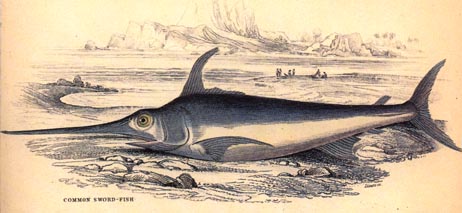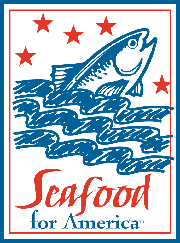

 |
 |
 The
Rationale:
The
Rationale:
The Pew Charitable Trusts’ SeaWeb in 1996 commissioned the Washington,
D.C. consulting firm The Mellman Group to conduct a survey “…on U.S. public
attitudes toward the ocean and ocean issues.” The survey results, in conjunction
with those of a series of focus group exercises conducted the previous
year, were evidently used by Pew/SeaWeb in plotting a campaign to increase
the U.S. public’s awareness of ocean issues. The results are reported in
“The SeaWeb/Mellman Group Landmark Poll on US Public Attitudes Toward the
Oceans” and are available at the Pew/SeaWeb website [![]() ].
In words from it’s introduction, the survey provides “…a strong sense
of what will work to engage the public in this issue, but the public still
requires educating before acknowledging a problem.”
].
In words from it’s introduction, the survey provides “…a strong sense
of what will work to engage the public in this issue, but the public still
requires educating before acknowledging a problem.”
“Rejection Of Personal Responsibility Was The Prime Impediment To Action - Some participants were eventually willing to accept responsibility, but were unsure of how they could personally make a difference. They expressed feeling helpless; that they were only one person….”
From the Pew survey: “Destruction of our oceans is an issue waiting to be made…. Oceans being destroyed ranks lower on the list (of the respondents’ most important environmental problems), with only 14% saying it is one of the two most important environmental problems…. At the same time though, most of the public attitudes required to create a major issue are in place…. All this latent concern about oceans can be translated into significant political action.”
“Americans Believe The Ocean’s Problems Stem From Many Sources,
But Oil Companies Are Seen As A Prime Culprit - In fact, 81% of Americans
believe that oil spills are a very serious problem. This is followed by
chemical runoff from large corporate farms (75% very serious), improperly
treated water from towns near the coast (69%), contaminated seafood (65%)
and trash, oil, and chemical runoff from streets (65%). In contrast, people
believe the least serious ocean problems are air pollution from cars and
industry (40%), and the killing of sharks (30%).”
“Oil, The Plate, And The Critters Are Key Ways Into The Issue -
Chronic oil dumping in the ocean most clearly communicates that the oceans
are in trouble, and makes people very angry. People see the fact that 3.25
million tons of oil enters the world’s oceans each year as a strong indicator
that the oceans are in trouble (71% ‘great deal of trouble’). This statement
also makes a plurality (40%) feel very angry. Other meaningful indicators
that the oceans are in trouble include overfishing and the loss of critical
species (61% great deal), beaches being closed 5000 times in the last decade
(60% great deal), and marine mammals being destroyed (58% great deal).
Surprisingly, what makes people the most angry is shark finning, or cutting
the fins off living sharks and then throwing the sharks back in the water
to die (42% say it makes them extremely angry).”
From the Pew Anti-Swordfish Consumer Campaign:
GIVE SWORDFISH A BREAK! A project of SeaWeb and the Natural Resources Defense Council:
• Tuesday 20 Jan. 1997 - 27 Leading East Coast Chefs Announce They Are
Taking Swordfish Off The Menu
• Although fresh North Atlantic swordfish are a popular food item in
restaurants, at markets and on grills - they need a break. Populations
need to be replenished. The fish need a chance to recover from a decade
of overfishing.
• You Can Help. If you are a chef... don’t COOK it. An owner or work
at a restaurant or market... don’t OFFER it. A fish lover... don’t EAT
it.
• North Atlantic SWORDFISH will be back if we do our part now.
• Write the President and ask him to adopt strong conservation measures
that will ensure the prompt recovery of swordfish.
The Reality:
• Out of the approximately 30 million pounds of swordfish consumed annually in the U.S., nearly two-thirds is harvested in the Pacific - with more than 8 million pounds being harvested by U.S. fishermen. Pacific swordfish stocks aren’t classified as overfished. Of the remainder of the U.S. supply, more than 7 million pounds are caught by U.S. and Canadian fishermen in the Atlantic. U.S. and Canadian swordfish fishermen have demanded international management and comply with the strict regulations under the rebuilding program for Atlantic swordfish established by the International Commission for the Conservation of Atlantic Tunas (ICCAT). Two million of the remaining 3 million pounds of swordfish consumed in the U.S. are caught by Brazil and Uruguay in the South Atlantic. The South Atlantic stock is healthy, estimated to be at 99% of its optimum level, and is under strict ICCAT quota management to ensure that it remains that way.
• The remaining 1 million pounds of swordfish consumed in the U.S. is caught by the vessels which may not be fishing in compliance with ICCAT’s regulations. Of all the vessels affected by a U.S. swordfish boycott, the few catching these fish would be the only ones that might not be in compliance with ICCAT regulations.
• Approximately 90% of the total Atlantic swordfish harvest is now caught,
landed and consumed outside the U.S. market and will be unaffected by any
attempted U.S. swordfish boycott. (These statistics, from National Marine
Fisheries Service data sheets, were provided by Blue Water Fishermen’s
Association)
| “The ‘Give Swordfish A Break’ campaign penalizes U.S. fishermen who are already abiding by the law, and it doesn’t recognize that we have a rebuilding program in place.” Dr. Rebecca Lent, Chief, Office of Highly Migratory Species, National Marine Fisheries Service, U.S. Department of Commerce. |
A U.S. swordfish boycott will....
• have no effect on nearly 90% of Atlantic swordfish harvests, which
are not currently marketed in the U.S.;
• not stop the major Atlantic harvesters from catching Atlantic swordfish;
• punish U.S. and Canadian fishermen, who insisted on and are complying
with a rebuilding program for Atlantic swordfish;
• hurt Pacific swordfish harvesters, including U.S. fishermen, who
are fishing responsibly in a healthy fishery and who provide nearly two-thirds
of the swordfish consumed in the U.S.;
• result in significant economic losses to the U.S.; and
• prevent American consumers from enjoying nutritious swordfish while
having a negligible effect on those nations that are unwilling to effectively
regulate their swordfish fleets.
[![]() National
Fisheries Institute response to the proposed boycott]
National
Fisheries Institute response to the proposed boycott]
So why the boycott?
Given the makeup of the international swordfish fisheries and markets,
it’s obvious that a consumer boycott in the United States isn’t going to
have very much impact on the North Atlantic swordfish fishery that Pew
and the NRDC are so intent on saving. A very small percentage of the vessels
that are not complying with the ICCAT regulations are selling their fish
in U.S. markets. If they are closed out of our markets they will easily
find alternatives. U.S. (and Canadian) fishermen who are fishing by the
rules, dock operators, truckers, distributors, tackle and gear dealers,
wholesalers, retailers, restaurateurs and ultimately consumers will pay
the price of the boycott. And for what? Pew makes it plain via the Mellman
Group report it posted on its SeaWeb website that it’s aim is to engage
the public’s interest in ocean issues. The focus group and survey work
reported there shows that one of the “hot button” issues for doing that
is overfishing (it also shows that oil dumping is the “hottest button”)
and that to really become “engaged” people must be shown how they themselves
can make a difference individually. We’ve had overfishing in the North
Atlantic swordfish fishery, there are a lot of people that can be convinced
that a U.S. boycott of swordfish will help the fishery, and that their
participation can make the boycott successful, so away we go - along with
those folks that brought Alar to the public’s attention. A lot of people
- almost all of them owners or employees of small businesses - are going
to be severely hurt economically and the swordfish aren’t going to be significantly
better off. But more of the public will definitely be engaged. Is that
all that matters?
